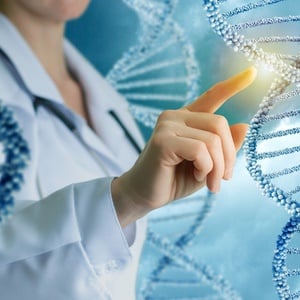
CRISPR gene editing has come up in various health related news stories over the past couple of years. This technology means that you can literally “snip” or edit strands of DNA with molecular “scissors” called CRISPR, according to a previous Health24 article.
CRISPR stands for Clustered Regularly Interspaced Short Palindromic Repeats – this refers to a specific repeated pattern found in the DNA of many bacteria.
In 2013, Health24 spoke to Professor Raj Ramesar, principal Investigator at the Division of Human Genetics, University of Cape Town, who stated that the technique wouldn't be able to deliver miracle cures at that stage.
But recently, in the first clinical trial of its type, researchers used CRISPR to edit the DNA of people’s immune cells in the hope to fight cancer, according to Associated Press.
Preliminary data from the trial suggested that this technique is safe to use for cancer patients. Dr Edward Stadtmauer, co-author of the study and professor of oncology at the University of Pennsylvania, said that the trial is proof that gene editing of these particular cells can be done safely.
"It's an important step on the path toward using CRISPR-Cas genome editing in patients and shows the potential of this technology to be a safe and effective therapy," said Jennifer Doudna of the University of California. She is a contributor to the discovery and research of CRISPR technology.
However, as with CRISPR technology as a whole, more research is needed before it can be used as a successful treatment for cancer.
“This treatment is not ready for its prime time, but it’s definitely very promising," Stadtmauer said in an interview with NPR (National Public Radio).
What did the trial entail?
According to a press release from the University of Pennsylvania, only three patients have received this treatment in the clinical trial so far – two with a blood cancer called multiple myeloma and one with sarcoma, a connective-tissue cancer.
Researchers removed, edited and returned the cells to the patients’ bodies. No serious side effects occurred during the treatments.
The researchers stated in the release that the number of edits made to each cell means that multiple possible cells are produced and the optimal and most active cell product remains to be determined.
During this Phase 1 clinical trial, where only a small number of patients are tested, the researchers are continuing to analyse patient samples and that longer clinical follow-ups are still needed to determine the exact outcome.
For now, it’s important to know that the CRISPR editing technique is used to improve the effectiveness of gene therapy and not to “edit” a patient’s DNA as a whole. The main takeaway from the first trial is that the treatment can be done safely, without any side effects. According to the researchers, this alone is a great step towards possible future genetic treatment of cancer.
Image credit: iStock




 Publications
Publications
 Partners
Partners











